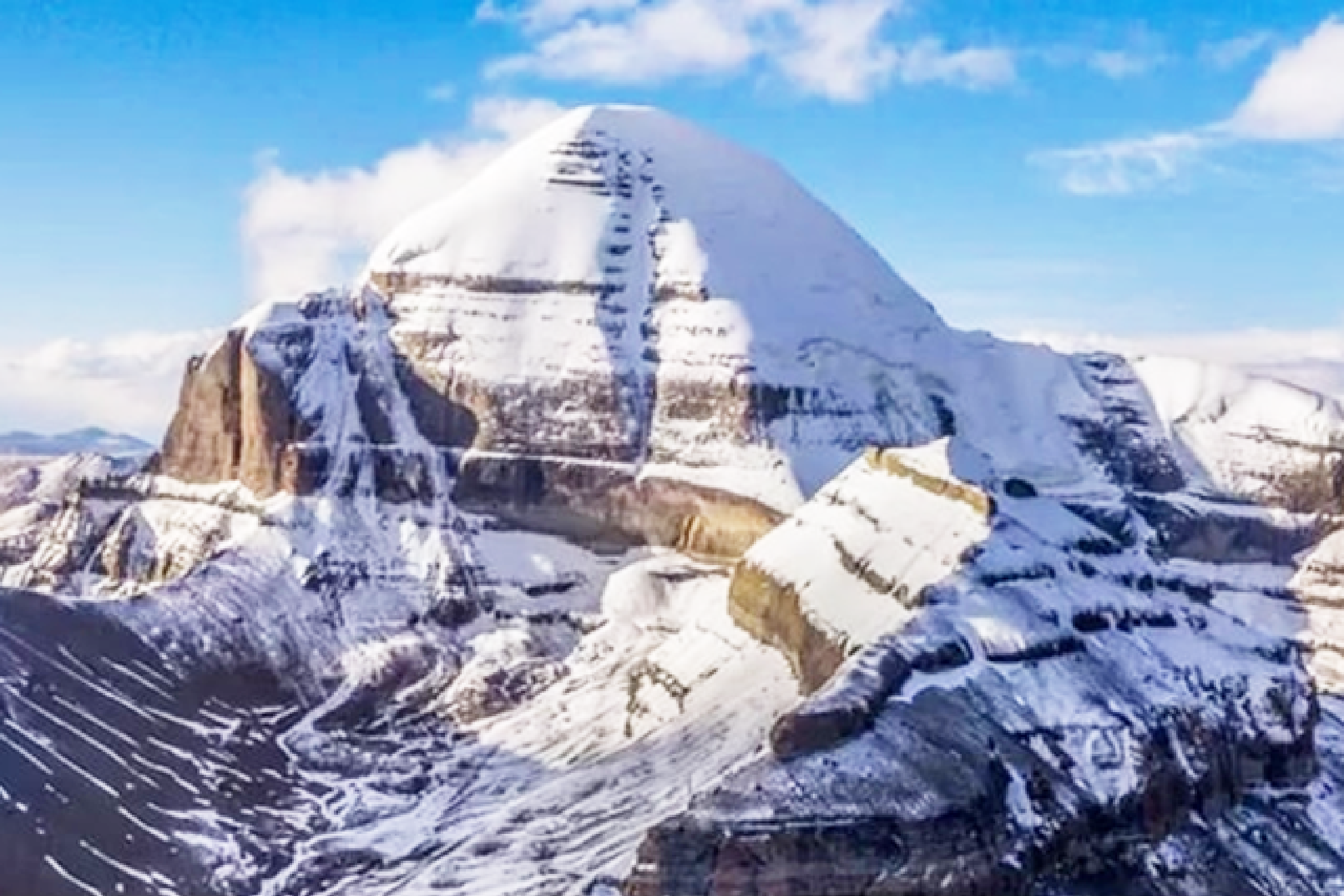Kailash Mansarovar
Mount Kailash and the serene Lake Mansarovar (Mapang Yongcuo)
Among the most known spiritual sites in the world are Mount Kailash and the neighboring Lake Mapang Yongcuo, also called Lake Manasarovar. This holy mountain and lake are tucked away in the vast Tibetan Plateau and draw thousands of pilgrims each year from a variety of religious backgrounds, including Hinduism, Bon, Buddhism, and Jainism. The trip, called Kailash Manasarovar Yatra, is a well-known spiritual experience rich in mythology, faith, and cosmic symbolism in addition to being a physical trek.
The Significance of Mount Kailash

At 21,778 feet, Mount Kailash rises majestically and is regarded as one of the world's holiest mountains. According to Hindu belief, it is the location where the universe finds its cosmic center and the heavenly residence of Lord Shiva and his consort, Parvati. According to legend, Ravana tried to raise this powerful mountain as a sign of his strength and devotion.
As the earthly manifestation of Mount Meru, the axis mundi, or the center of the universe, Mount Kailash is referred to by Tibetan Buddhists as Kangri Rinpoche, or “precious snow mountain.” The location where Risabhanatha, the first Tirthankara, achieved enlightenment is called Ashtapada in Jainism. Kailash is also revered by the native Tibetan Bon religion as the sacred nine-story swastika mountain, which is thought to be the source of spiritual power.
Despite its religious importance, no one climbs Mount Kailash. Instead, pilgrims circumambulate the mountain in a ritual known as the Kailash Kora, a practice believed to wash away sins and bring about spiritual awakening.
Lake Mapan Yongcuo: A Mirror of the Divine

One of the world's highest freshwater lakes, Lake Mapan Yongcuo, is located directly south of the mountain. It symbolizes purity and spiritual renewal and was created by Lord Brahma's mind, according to Hindu scriptures. As part of the Kailash Mansarovar pilgrimage, pilgrims take a bath in its crystal-clear waters to purify their souls and their past karma.
Buddhist, Jain, and Bon traditions also place a high value on this tranquil lake. It is thought that the lake's mirror-like surface reflects one's inner self, facilitating meditation and a closer relationship with God. It is an essential part of the entire pilgrimage journey because of its closeness to the mountain.
A Journey Across the Tibetan Plateau
The journey to Mapan Yongcuo and Kailash is both spiritually and physically taxing. The setting, which takes place in the far reaches of the Tibetan Plateau, is bleak, magical, and breathtaking. The plateau, which is well-known for its icy winds and thin air, provides a setting of sublime seclusion that promotes introspection and spiritual concentration.
The 52-kilometer pilgrimage trail that circles Mount Kailash typically takes three days to finish. In order to complete the circuit, pilgrims frequently brave harsh weather conditions as they follow historic routes that meander through rocky terrain, mountain passes, and holy valleys.
The Source of Four Sacred Rivers
In addition to its spiritual significance, Mount Kailash is the origin of the Indus, Sutlej, Brahmaputra, and Karnali, four of Asia's principal rivers. These rivers divide the world into four symbolic quadrants, each flowing in a different direction from the mountain. Many people think Kailash is a natural representation of the cosmic mandala because of its unique location, which has only enhanced its mystical aura.
A Timeless Spiritual Calling
Many spiritual seekers around the world still dream of making the pilgrimage to Kailash Mansarovar. It is a journey inward that offers self-discovery, healing, and a connection to the divine; it is more than just a religious obligation. The spiritual significance of Kailash and Mapan Yongcuo cannot be denied, regardless of whether one chooses to follow the path for faith, mythology, or the pure wonder of nature.
This holy pair of mountains and lakes, which are set against the Tibetan Plateau, represent the enduring connection between spirituality and nature—a journey that never ends where the divine and the earth meet.

Explore the place
The City Maps
Trip Ideas
FEATURED ARTICLE
Langtang Valley Trek: Journey to the Heart of the Himalayas
The Langtang Valley Trek is a mesmerizing journey that offers stunning scenery, cultural immersion, and a taste of Nepal's tranquil beauty, all while being tucked away in the shadow of the majestic Himalayas. Known as the "Valley of Glaciers," Langtang Valley is the ideal location for hikers looking for a combination of breathtaking scenery and genuine mountain experiences.



